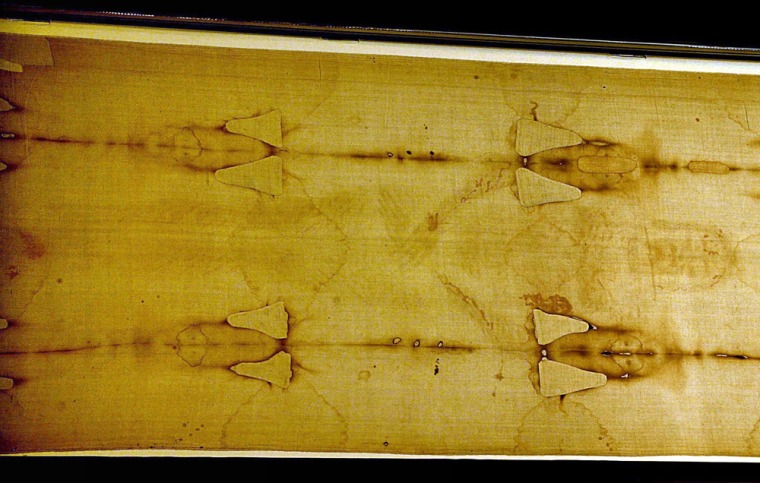Nathan Wilson is an English teacher with no scientific training, but he thinks he knows how the piece of linen revered by many as Jesus' burial cloth was made. And he thinks it's not a physical sign of the Resurrection.
In other words, in Wilson's estimation, the Shroud of Turin is a fake — produced with some glass, paint and old cloth. And that theory, especially with Easter this weekend, has so-called "Shroudies" abuzz.
"A lot of religious people are upset," said Wilson, 26, who teaches at New Saint Andrews College in Moscow, Idaho.
Wilson is himself an evangelical Christian but said his views on the shroud don't change his faith.
"I'm a Bible-believing Christian who believes in the Resurrection completely without a doubt," he said.
The Shroud of Turin is a linen cloth, about 14 feet long and 3 feet wide, that has been kept in the city of Turin, Italy, since 1578. It bears the image of a man with wounds similar to those suffered by Jesus. Believers say it was used to wrap Christ after he was taken off the cross.
The English instructor believes a medieval forger could have painted the image of a crucified man on a pane of glass, laid it on the linen, then left it outside in the sun to bleach the cloth for several days. As the linen lightened, the painted image of the man remained dark on the cloth, creating the equivalent of a photo negative.
Wilson wrote his theory in Books and Culture, a magazine for Christian intellectuals. It was picked up by several Web sites and is being debated in shroud circles. Wilson's Web site received more than 100,000 hits from 45 countries in the first week of his article's publication.
Shroud expert Dan Porter said that while Wilson's theory is ingenious, it does not produce images identical to those on the shroud.
"It is not adequate to produce something that looks like the shroud in two or three ways," said Porter, who lives in Bronxville, N.Y. "One must produce an image that meets all of the criteria."
Porter contends sun bleaching cannot have produced the image, which he and many others say is the result of chemical reactions on the cloth.
"A problem with Wilson's hypothesis is that sun bleaching merely accelerates bleaching that will occur naturally as the material is exposed to light," Porter wrote in an e-mail to The Associated Press. "Eventually, Wilson's sun bleach shroud image will fade into the background as exposure equalizes the bleaching."
The shroud has often been displayed, sometimes in bright sunlight for days at a time, and no such image fading has occurred, Porter said.
Porter and others also question whether panes of glass at least 6 feet long were produced in medieval times, as Wilson's theory would require.
Radiocarbon tests of the Shroud of Turin were done in 1988, and dated the cloth at A.D. 1260 to 1390 — seeming ruling it out as Jesus' burial cloth. But Raymond Rogers of Los Alamos National Laboratory recently argued that the tested threads came from later patches and might have been contaminated. Rogers calculated that the shroud is 1,300 to 3,000 years old and could easily date from Jesus' era.
Wilson said he wants to write a novel about his theory. The forger or perhaps forgers, Wilson theorizes, probably robbed a grave and pulled the aged shroud off a body, then crucified someone to obtain the blood and study the wounds of Jesus.
"Most likely it involved some real wicked people," Wilson said.
